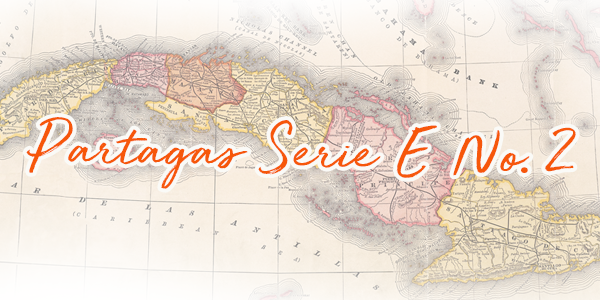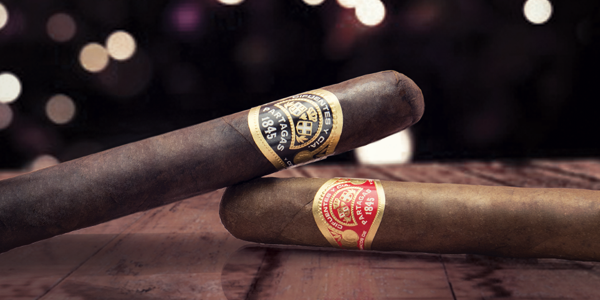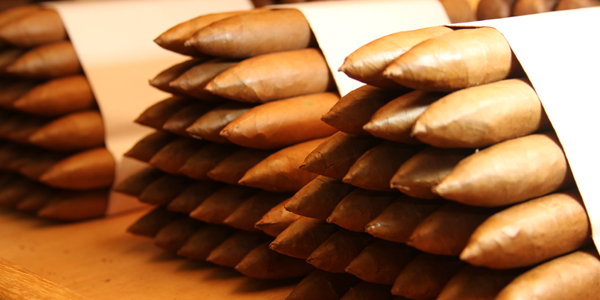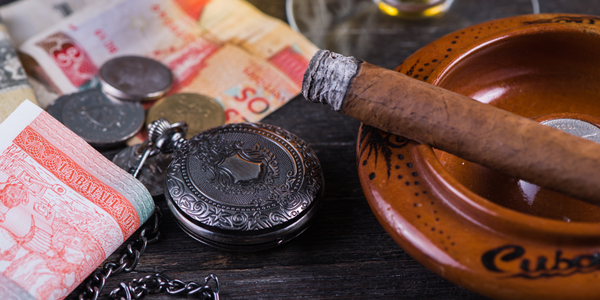Famous Cuban Cigars: Partagás Serie E No. 2
If you are an avid smoker of Cuban cigars, you have likely enjoyed your share of the Partagás brand. The generally agreed-upon iconic representation of the brand is the Partagás Serie D No. 4, more commonly known simply as the D-4, a 4.875 x 50 Robusto, more than US$30 in London. More recently, the D-4 has company as a beloved cigar in the Cuban Partagás collection. The Partagas Serie E No. 2 gained the spotlight in recent years thanks to its bigger girth and a welcome reception from the critics.
The Paratagás Serie E No. 2
Up until 2011, Partagás made cigars with relatively moderately sized ring gauges. Then came the introduction of the Partagás Serie E No. 2, a Toro at 5.5 x 54, running about US$45 at James J. Fox in London. This is now the fattest Partagás. For a fairly young vitola in a premier Cuban brand, the E-2 has become very successful. In 2016, Cigar Aficionado dubbed it the number three cigar of the year.
Tasty
It’s possible I’ve told you this story before. In 2018, after lunch at a very good restaurant in Prague, Czech Republic, I walked about a mile to the local La Casa del Habano. There, I asked what cigar was smoking really well at the time. Without hesitating, the E-2 was recommended. I took the cigar, which was straight-cut for me, into the lounge. A double espresso appeared a few seconds later. I put a flame to the foot of the cigar and puffed.
Initially, I felt the cigar was a bit over-humidified, but the draw was not affected. The flavor of the smoke had some complexity and the strength was, overall, medium-full. I picked up a little saltiness right away. That gave way to smoother notes of leather and fairly strong caramel, earthiness and wood. The finish was definitively oaky. I have smoked many E-2s since and have always found them pleasant and well-balanced, though some of them exhibited a lot more acidity than others. It’s a lot of cigar and you should really take your time if you’re going to enjoy it. My own take is that the E-2 is not quite as complex as the D-4, if you need a point of comparison.
The History of Partagás, a Little Bit Tragic
Partagás is among the oldest Cuban cigar companies, being founded in 1845 by Don Jaime Partagás y Ravelo, an immigrant from Catalonia, Spain. Upon his arrival in Cuba a few years before, Don Jaime bought as many of the best tobacco plants as he could afford in Vuelta Abajo, Pinar del Rio, Cuba’s premier cigar-tobacco growing region in the western part of the island. Don Jaime took that tobacco and opened a factory in Havana where he put his blending and fermentation talents to work. He is also credited with being the first to introduce the practice of having a reader to keep his rollers entertained while they made cigars. By 1858, Partagás cigars ranked second in exports, behind only H. Upmann, among the Cuban brands.
In 1868, Don Jaime was murdered while visiting one of his plantations. The killer thought his wife and Don Jaime were having an affair. Don Jaime’s son, Jose, took over the business. He sold it soon after to a banker, Jose Bances (apparently no relation to the Bances cigar brand), who had no knowledge of the cigar business. Bances brought in another Spanish immigrant, Ramón Cifuentes Llano. Quickly, Cifuentes took over the cigar-making business entirely, later acquiring the tobacco fields of the company. Cifuentes continued the company’s growth with the purchase of the Ramón Allones brand. Later, Cifuentes’ sons having taken over the business, the company added Bolivar and La Gloria Cubana.
Know Your A-B-Cs
Partagás introduced what’s known as its “Alphabet Series,” or the “letters line,” sometime in the 1930s when the brand was first sold in the United Kingdom. When it began, the line had letters A through D and each letter had four sizes. So, 16 vitolas in all. The line was discontinued in the 1960s, but made a comeback, with a new red-and-gold band, little by little over the years. The initial release came in 1975 with the D-4. The line has since expanded to include the letters E and P, but no longer does each new letter apply to four sizes.
This line is separate from the regular line that includes stars like the Lusitania, a decidedly medium-powered Double Corona, 7.625 x 49, about US$47 at Fox. This was a “top 25” in Cigar Aficionado’s 2018 cigar of the year roundup. It’s one I’d recommend to understand the difference from the alphabets.






